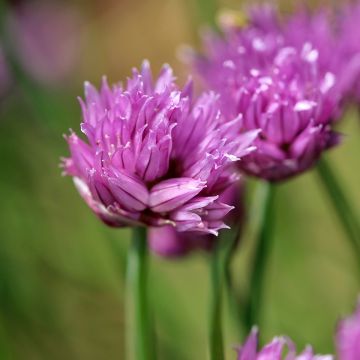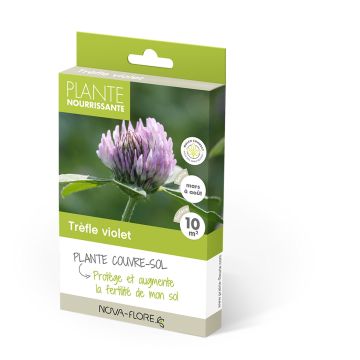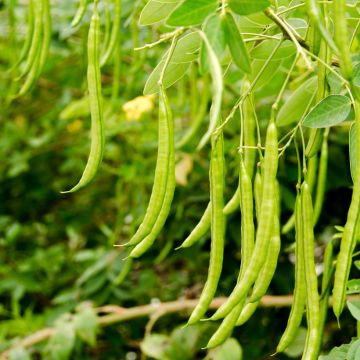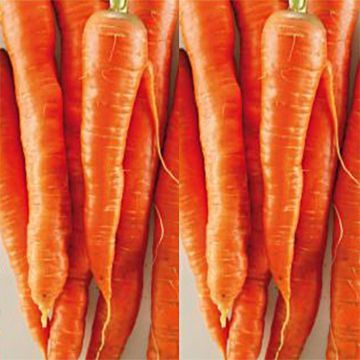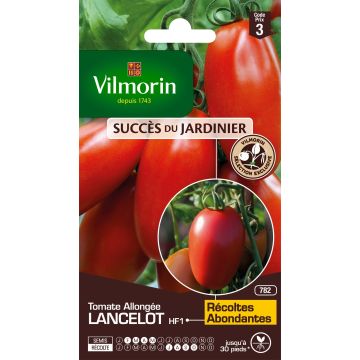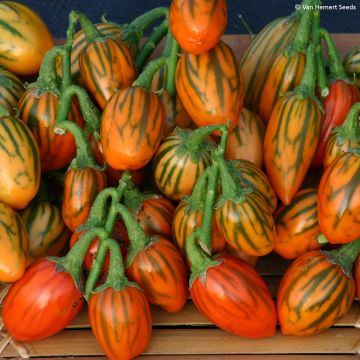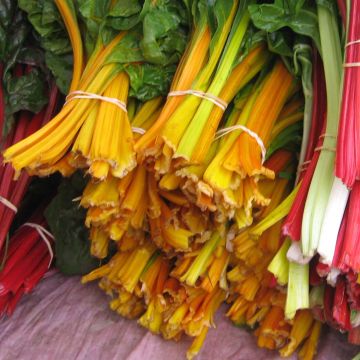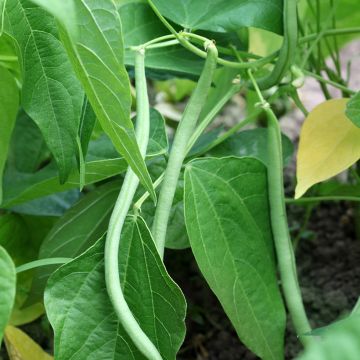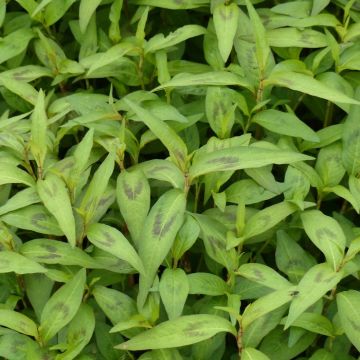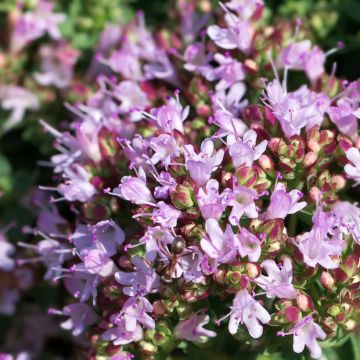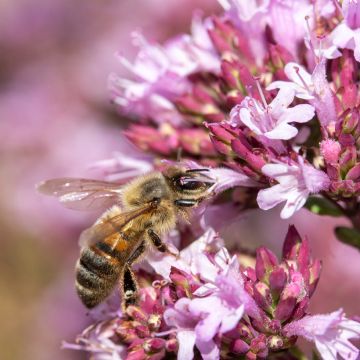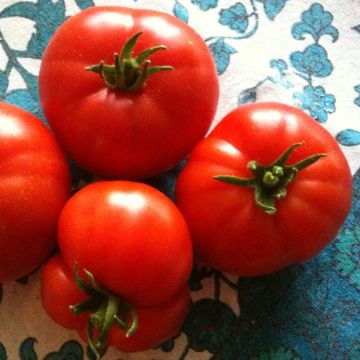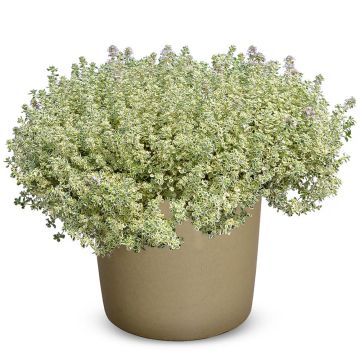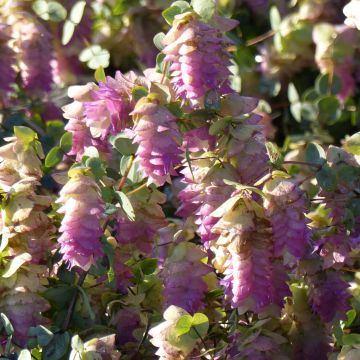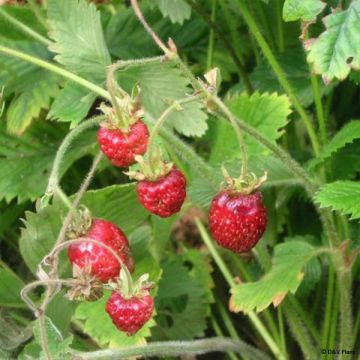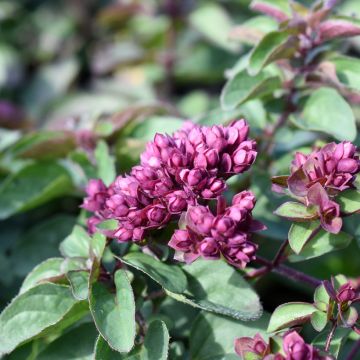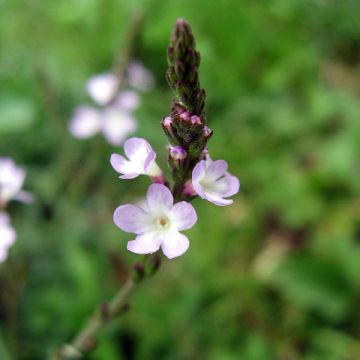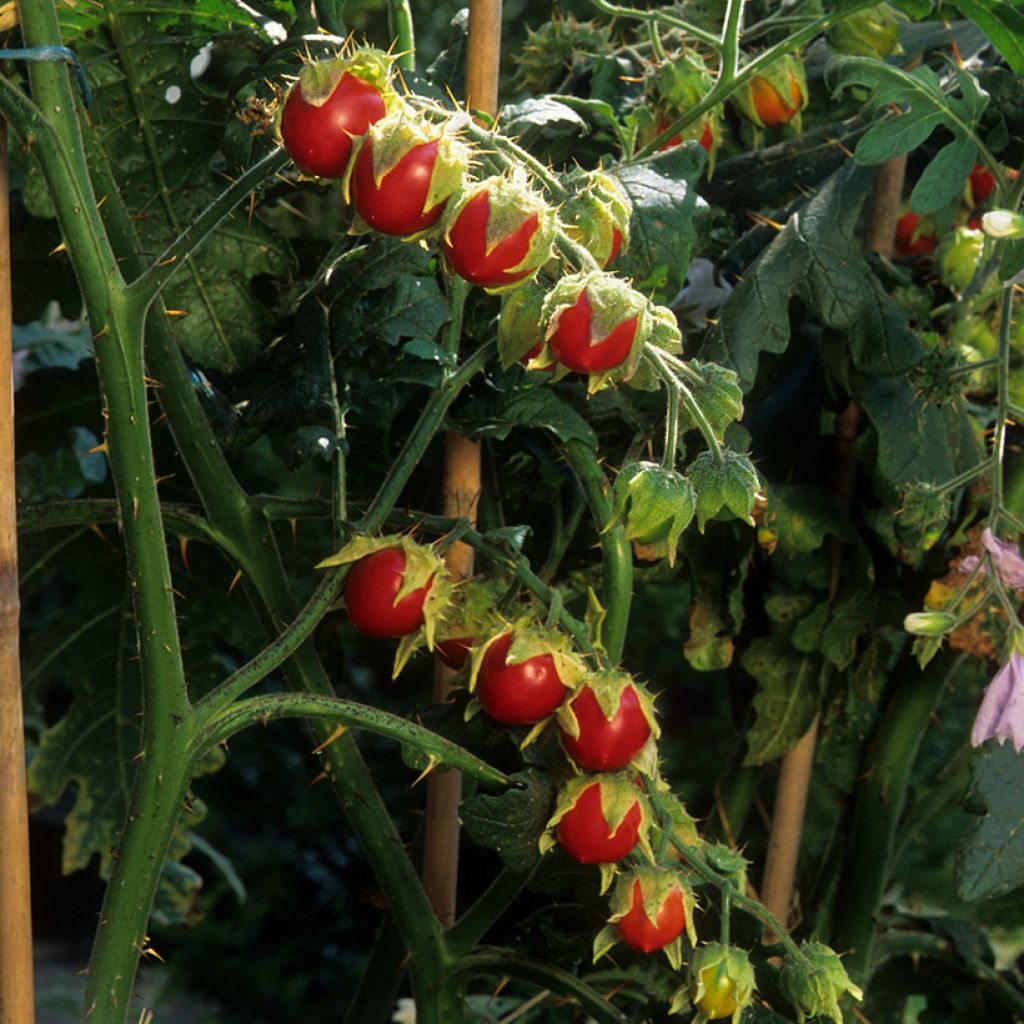

Solanum sisymbriifolium Starbenas - Sticky nightshade
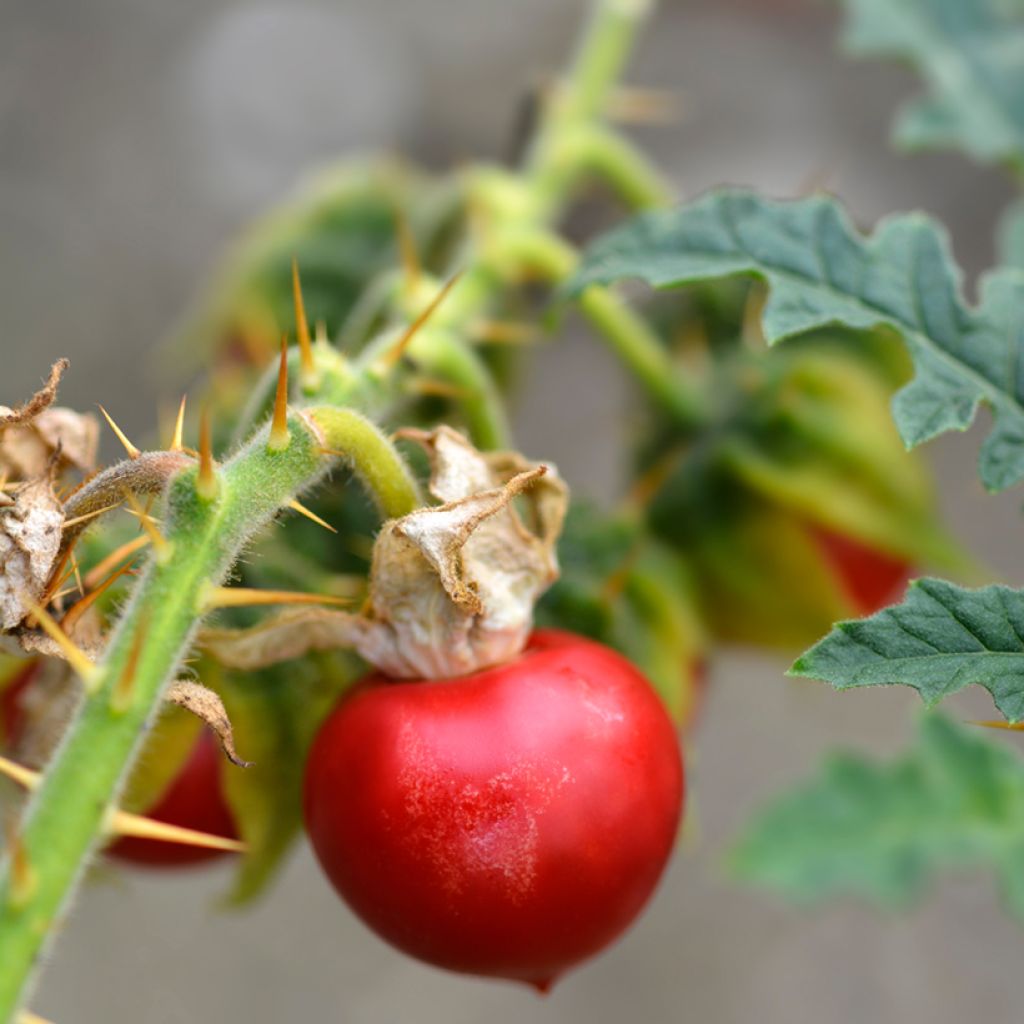

Solanum sisymbriifolium Starbenas - Sticky nightshade
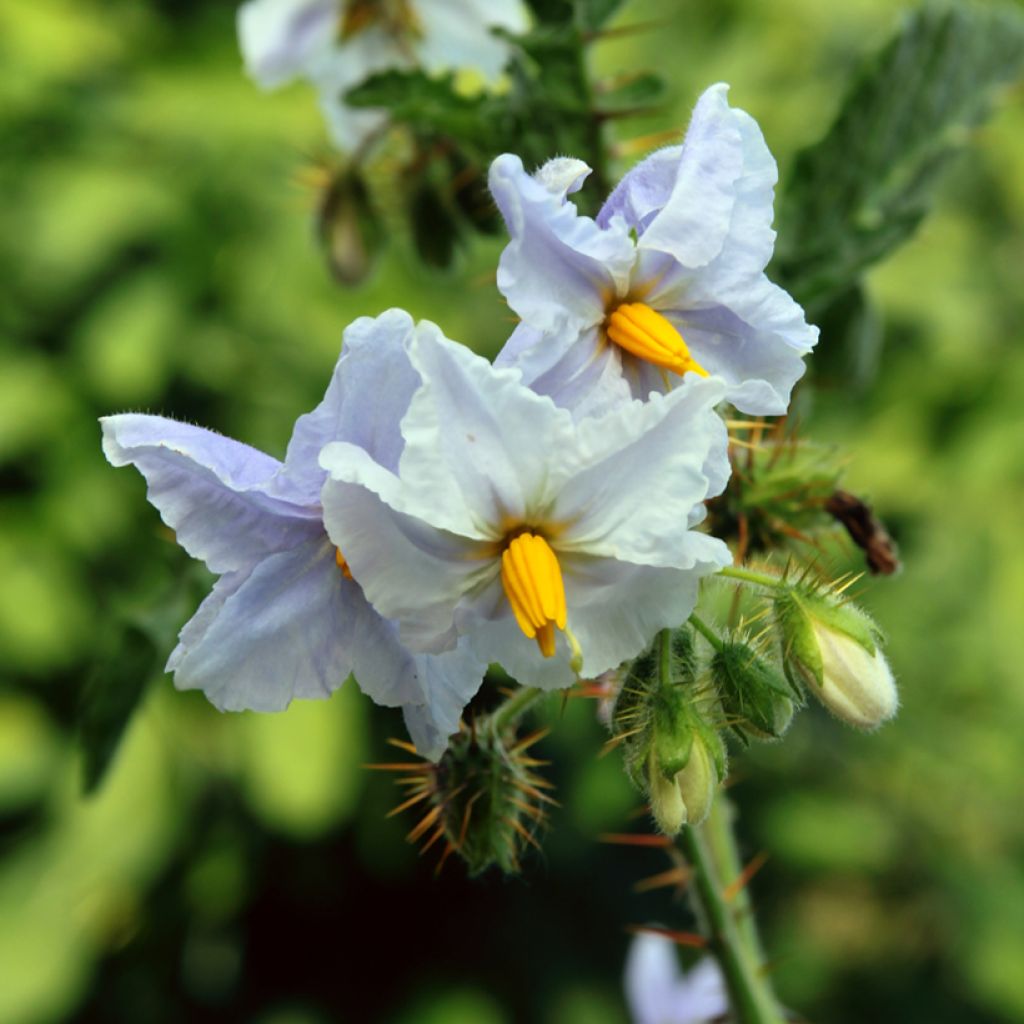

Solanum sisymbriifolium Starbenas - Sticky nightshade
Solanum sisymbriifolium Starbenas - Sticky nightshade
Solanum sisymbriifolium Starbenas®
Litchi Tomato, Sticky Nightshade, Fire-and-Ice Plant, Red Buffalo-bur
This plant carries a 24 months recovery warranty
More information
We guarantee the quality of our plants for a full growing cycle, and will replace at our expense any plant that fails to recover under normal climatic and planting conditions.
From €5.90 for pickup delivery and €6.90 for home delivery
Express home delivery from €8.90.
Does this plant fit my garden?
Set up your Plantfit profile →
Description
Solanum sisymbriifolium 'Starbenas', also known as Litchi Tomato or Balbis Nightshade, is a perennial plant typically grown as an annual in our latitudes. It produces cherry tomato-like fruits, with a sweet and mild taste that resembles a combination of tomato and litchi. It grows rapidly and forms a bush initially adorned with white or blue trumpet-shaped flowers, before developing fruits that can be harvested between August and October. The entire plant, except for the flowers, is prickly: leaves, stems, and berry calyx. It is necessary to wear gloves and provide support for this plant.
Solanum sisymbriifolium 'Starbenas' belongs to the Solanaceae family, just like aubergine and tomato. This shrubby perennial has a bushy habit and reaches a height of 1.5 to 2 m at maturity with a spread of 70 cm. The deeply notched, pinnatifid leaf, measuring 20 to 25 cm in length, is characteristic; the petiole and veins on both sides of the leaf are covered in long sharp needles. In summer, the plant produces clusters of 5 to 10 star-shaped, white, blue, or purple flowers, with yellow stamens, which are highly decorative and very similar to those of Solanum jasminoides, commonly known as False Jasmine Nightshade. The fruits, with smooth skin and a diameter of 1 to 2 cm, are round, green, and turn red when ripe. They can be eaten raw or cooked. The calyx is also covered in fine prickles. The fruit detaches when ripe.
Native to South America, the Balbis Nightshade requires warmth and is grown in full sun in deep, loose, humus-rich soil.
Harvesting: Harvest the fruits when ripe, between August and October, before the first frost. If the fruits are not fully ripe, pick them before the frost and let them ripen indoors.
Storage: The fruits can be stored for several weeks in a cool place at 10°C.
Gardener's tip: We recommend mulching the soil with thin successive layers of grass clippings, if possible mixed with dead leaves. This protection helps to keep the soil moist and also reduces weed growth.
Report an error about the product description
Solanum sisymbriifolium Starbenas - Sticky nightshade in pictures


Plant habit
Flowering
Foliage
Botanical data
Solanum
sisymbriifolium
Starbenas®
Solanaceae
Litchi Tomato, Sticky Nightshade, Fire-and-Ice Plant, Red Buffalo-bur
Tomate-litchi, Morelle de Balbis, Morelle à feuille de Sisymbrium
Cultivar or hybrid
Other Vegetable garden A to Z
Planting and care
Planting Litchi Tomato should be done in spring: in March-April for greenhouse or container planting, and in May-June, when the risk of frost has passed, for planting in open ground.
In open ground: Litchi Tomato thrives in well-drained, rich, sandy soils. Choose a sunny and warm exposure. If you plant multiple plants, space them 80 cm apart in all directions. Add well-rotted compost at the time of planting. Dig a hole (3 times the volume of the root ball), place the root ball and cover with soil. Firmly tamp down and water thoroughly.
In containers: Place a layer of gravel at the bottom of the pot and fill the pot with a mixture of potting soil and sand. Place the root ball, cover with soil, and lightly tamp down. Water to keep the soil moist. Remember to bring the pots indoors in autumn, before the first frost.
During cultivation, water regularly at the base. Install stakes to support the plant's development.
Planting period
Intended location
Care
This item has not been reviewed yet - be the first to leave a review about it.
Vegetable plants
Haven't found what you were looking for?
Hardiness is the lowest winter temperature a plant can endure without suffering serious damage or even dying. However, hardiness is affected by location (a sheltered area, such as a patio), protection (winter cover) and soil type (hardiness is improved by well-drained soil).

Photo Sharing Terms & Conditions
In order to encourage gardeners to interact and share their experiences, Promesse de fleurs offers various media enabling content to be uploaded onto its Site - in particular via the ‘Photo sharing’ module.
The User agrees to refrain from:
- Posting any content that is illegal, prejudicial, insulting, racist, inciteful to hatred, revisionist, contrary to public decency, that infringes on privacy or on the privacy rights of third parties, in particular the publicity rights of persons and goods, intellectual property rights, or the right to privacy.
- Submitting content on behalf of a third party;
- Impersonate the identity of a third party and/or publish any personal information about a third party;
In general, the User undertakes to refrain from any unethical behaviour.
All Content (in particular text, comments, files, images, photos, videos, creative works, etc.), which may be subject to property or intellectual property rights, image or other private rights, shall remain the property of the User, subject to the limited rights granted by the terms of the licence granted by Promesse de fleurs as stated below. Users are at liberty to publish or not to publish such Content on the Site, notably via the ‘Photo Sharing’ facility, and accept that this Content shall be made public and freely accessible, notably on the Internet.
Users further acknowledge, undertake to have ,and guarantee that they hold all necessary rights and permissions to publish such material on the Site, in particular with regard to the legislation in force pertaining to any privacy, property, intellectual property, image, or contractual rights, or rights of any other nature. By publishing such Content on the Site, Users acknowledge accepting full liability as publishers of the Content within the meaning of the law, and grant Promesse de fleurs, free of charge, an inclusive, worldwide licence for the said Content for the entire duration of its publication, including all reproduction, representation, up/downloading, displaying, performing, transmission, and storage rights.
Users also grant permission for their name to be linked to the Content and accept that this link may not always be made available.
By engaging in posting material, Users consent to their Content becoming automatically accessible on the Internet, in particular on other sites and/or blogs and/or web pages of the Promesse de fleurs site, including in particular social pages and the Promesse de fleurs catalogue.
Users may secure the removal of entrusted content free of charge by issuing a simple request via our contact form.
The flowering period indicated on our website applies to countries and regions located in USDA zone 8 (France, the United Kingdom, Ireland, the Netherlands, etc.)
It will vary according to where you live:
- In zones 9 to 10 (Italy, Spain, Greece, etc.), flowering will occur about 2 to 4 weeks earlier.
- In zones 6 to 7 (Germany, Poland, Slovenia, and lower mountainous regions), flowering will be delayed by 2 to 3 weeks.
- In zone 5 (Central Europe, Scandinavia), blooming will be delayed by 3 to 5 weeks.
In temperate climates, pruning of spring-flowering shrubs (forsythia, spireas, etc.) should be done just after flowering.
Pruning of summer-flowering shrubs (Indian Lilac, Perovskia, etc.) can be done in winter or spring.
In cold regions as well as with frost-sensitive plants, avoid pruning too early when severe frosts may still occur.
The planting period indicated on our website applies to countries and regions located in USDA zone 8 (France, United Kingdom, Ireland, Netherlands).
It will vary according to where you live:
- In Mediterranean zones (Marseille, Madrid, Milan, etc.), autumn and winter are the best planting periods.
- In continental zones (Strasbourg, Munich, Vienna, etc.), delay planting by 2 to 3 weeks in spring and bring it forward by 2 to 4 weeks in autumn.
- In mountainous regions (the Alps, Pyrenees, Carpathians, etc.), it is best to plant in late spring (May-June) or late summer (August-September).
The harvesting period indicated on our website applies to countries and regions in USDA zone 8 (France, England, Ireland, the Netherlands).
In colder areas (Scandinavia, Poland, Austria...) fruit and vegetable harvests are likely to be delayed by 3-4 weeks.
In warmer areas (Italy, Spain, Greece, etc.), harvesting will probably take place earlier, depending on weather conditions.
The sowing periods indicated on our website apply to countries and regions within USDA Zone 8 (France, UK, Ireland, Netherlands).
In colder areas (Scandinavia, Poland, Austria...), delay any outdoor sowing by 3-4 weeks, or sow under glass.
In warmer climes (Italy, Spain, Greece, etc.), bring outdoor sowing forward by a few weeks.

































